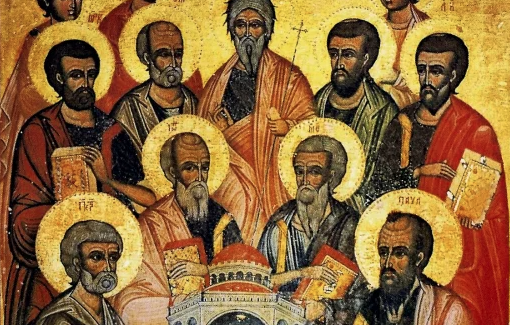Heart-wrenching stories in our Pugmire-Sigman family history Part-4
Pugmire, Sarah Jane – Terribly impoverished family with their 13 children.
I have a heart-wrenching photo of Jane and her seven children that shows how terribly impoverished the family was. The photo was taken in front of the home they bought from Joseph Hyrum Pugmire, her father. Sarah and Samuel Henderson had 13 children.
(Ref: Sarah Jane Pugmire 1858-1935, familysearch ID KWN5-2BK) and husband Samuel Henderson (1838-1922 – familysearch ID kwn52bl) were the parents of 13 children)
Schenck, Mary – When she died at age 34, she had lost 6 of her 10 children.
Mary Henderson married Joel Schenck in 1904. They had 10 children but when she died in 1918 at age 34, six of those ten had already pre-deceased her. The names of the deceased were Maud (1904-1916), Baby (1910-1910), Baby (1911-1911), Lucille (1912-1912), Baby (1917-1917) and Baby (1918-1918).
(Ref: Mary Henderson Schenck (familysearch ID kwzq458) and husband Joel Schenck (familysearch ID kwzq45x). Her gpa was Joseph Hyrum Pugmire.
Shipley, Dean and Gerald – Two early deaths for the Shipleys
Lyle and Georgia Shipley lost two children who died very young. Gerald born and died Oct 4, 1937 and his brother, Gerald born and died July 30, 1938
(Ref: Lyle Shipley (1915-1992 – Familysearch ID kwcgck4) and wife Georgia McGavin (1917-1939 – familysearch ID kwcgck8); tombstone with childrens names on it)
Smidt, Jacob – Marched in a death march in 1815 to Paris as Naopleon was defeated at Waterloo
Jacob lived in Rorichum, Germany which had been annexed to Prussia. At age 19, he was conscripted into the Prussian army and in 1815, just prior to their invasion of France, he was wounded and captured and began his 160 mile march to Paris. On the second day Jacob was rapidly becoming exhausted and was slowly but surely slipping back to the end of the line of prisoners and knew that his end was near. A young French girl watching the line of prisoners through a window of her home, seeing him praying, ran outside and handed him a glass of wine and two small biscuits which stimulated him to the extent that he was able to keep up with the other prisoners. Upon their arrival in Paris, their comrades were in the final battle at Lancenoit and LaBelles Alliance on Napoleon’s right flank where the Prussians broke through as part of Wellington’s counter-attack and defeated Napoleon at Waterloo. On the basis of his experiences and narrow escapes, his associates called him the “Little Iron Man.”
(Ref: Article by Alvin Buss, 1968 for Jacob Heijen Gerdes Schmit (1792-1881) familysearch ID kjz61rh)
Smith, Absalom and Amy – Home burned to the ground while they were held down by mobs
They were married in Quincy, Illinois and joined the latter-day saints there. They then moved to Virginia and then Iowa, but later they went to Nauvoo, Illinois and for a while they enjoyed prosperity and lived in a beautiful home there. But finally persecutions and sufferings were heaped upon the saints there, and vicious mobs came to drive them away. They were carried out of the new home they had just completed, and some of the mob held them down, while others burned their home to the ground.
(Ref: Absalom Smith (1819-1904 – familysearch ID kwnl4dl) and wife Amy Downs (1821-1896 – familysearch ID kwnl4d2). Absalom married a second wife, Catherine Messam in 1855 in Salt Lake City)
Smith, Steven and Stanley – Twins die in two days
Twins Steven and Stanley were born but were not on earth very long. Stanley died the same day he was born and Steven two days later. (Ref: Steven and Stanley Smith (1950-1950).
(Ref: Drex N Smith (1924-1979 – familysearch ID kw84r6d) and Mable Lygren (1926-1975 – familysearch ID kw84r6k) are the parents of Steven and Stanley Smith)
Wamsley, Samuel – Only 1 of 11 children alive when Samuel passed away in 1888.
Children of Samuel Wamsley and Rebecca Reese and the ages they died at: Sarah (40), Martha (30), Mary (10), Emily (1), Susan (10), Caroline (8), Levi (6), Samuel (6), William (18), Charles (9). Only one daughter, Melvina outlived her father. She died at age 77.
(Ref: Samuel Wamsley familysearch ID l4stv4d and wife Rebecca Reese familysearch ID 9htbj47)
Warden, Brian T – Many early deaths in family – mother 44, 1st wife 24, 2nd wife 45, Brian himself 41
Brian’s mother died at 44, his first wife died at 24, his second wife died at 45, he married his third wife in 2009 and he died six months later at age 41.
(Ref: Brian Todd Warden (1968-2009 – FamilySearch ID – kwzgbd8)
Willis, Evvian and Ruth – Only one of six children live to adulthood.
Evvian and Ruth Willis had only one of six children live to adulthood. Five of their children died under the age of two. One child was born and died in 1938, another in 1939, another in 1944, and 1945 and 1951. Only Bruce lived to adulthood (1940-1982).
(Ref: Evvian (1917-1997 – familysearch ID kw8q8nq) and wife Ruth Burton (1918-2001 – familysearch ID kw8q8n7 – familysearch ID kw8q8n7)
Wood, Martha – Three-Year Old Girl Dies After Short Illness
Martha Wood, three year old daughter of Mr. and Mrs. Denzel Wood of Auburn, Wyoming, passed away at her home, following a short illness, on Sunday, May 28, 1950. Martha was born June 17, 1947, at Afton, and though her span of life was short, she was loved by all who knew her, adding joy and happiness to the lives of everyone she came in contact with.
Music: Violin Solo: Eldon Hyde accompanied by Mrs. Elona Hillyard; Song: “I Know My Heavenly Father Knows” by the Auburn Ward Choir; Song: “That Little Girl of Mine” by Glenda Hyde and Ada Nelson, accompanied by Ruth Lindford; Closing Song: “Beautiful Isle of Somewhere” by Louis and Ern Turner.
(Ref: Martha Wood (1947-1950 – familysearch ID LR1V-PF8) is the daughter of Denzel Wood (1916-2000 – familysearch ID kwc1xzk) and Martha Merritt (1925-2008 – familysearch ID kwc1xzp)





























